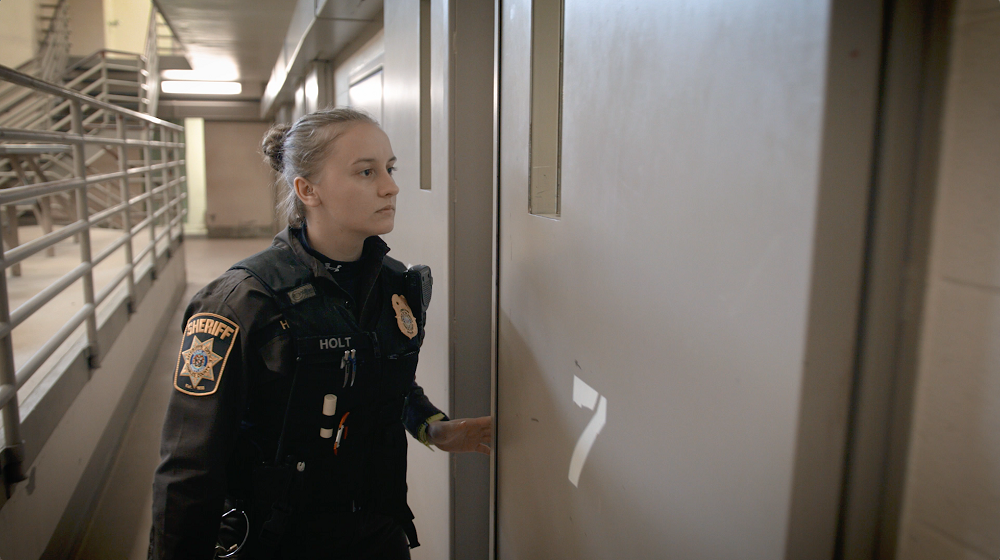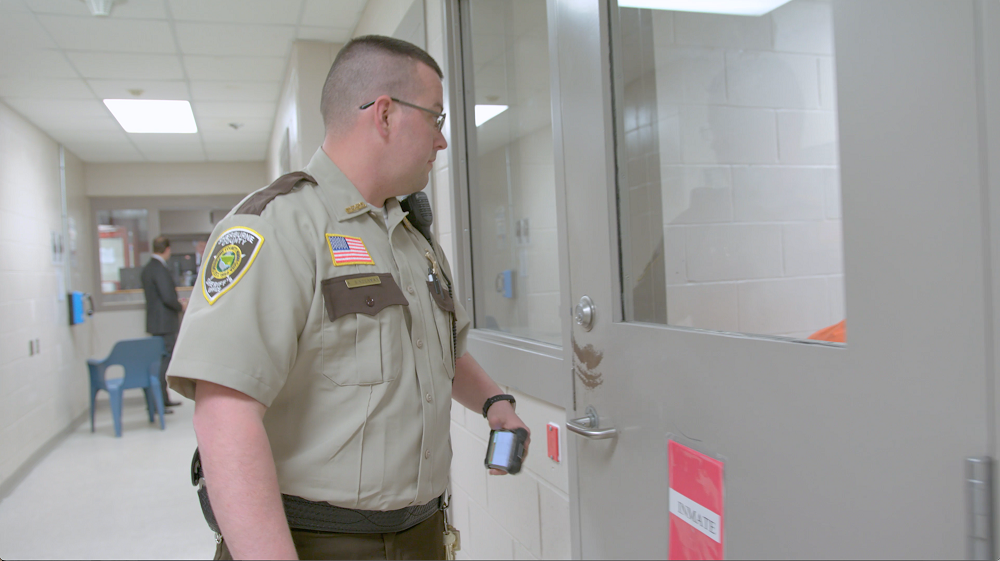The Top 3 Factors That Can Help Reduce Your Agency’s Liability Risk
Mark Cowley, Jail Operations at GUARDIAN RFID, brings over thirty-three years of law enforcement experience to the table. His career began with eighteen years as a patrol deputy, during which he advanced to an administrative role, followed by fifteen years as a jail administrator. Mark is a proud graduate of the FBI National Academy #225 and the Northwest School of Police Staff and Command.
Throughout his extensive career, Mark has learned several lessons but one in particular guided the rest of his career. The following three key factors, drawn from some of the most high-risk situations Mark has encountered, offer valuable insights into reducing your agency’s liability risks.
A Jail Administrator’s Experience
During his first year as a jail administrator, Mark was convinced that his agency would pass their annual jail inspection. However, when inspection day came, Mark met with the jail inspector and reviewed the records indicating they weren’t spot-on with their rounds. Mark assumed they were compliant with the standards as he and his team continued to do what they had always done with their security rounds, which had passed all inspections in previous years.
After some deep thought of all the factors that would have contributed to their failed test, Mark realized that he had not personally read or reviewed the facility’s written policy. This epiphany led his team to take corrective measures and pass their inspections every year following their failed test. Nonetheless, it was a hard slap of reality straight to the face. Mark and his team learned their lesson and took earnest time grasping all of the Idaho Jail Standards.
Now, Mark has been an instructor at the Idaho Peace Officers Standard and Training and Detention Academy teaching Idaho Jail Standards for roughly the past eight years. In the following years of the failed inspection, the facility supervisors were responsible for teaching the Idaho Jail Standards in all meetings and training events to avoid ever facing another failure. Additionally, they ensure everyone has access to the state standards documents so anyone can review and train with their respective teams.
Mark saw the value in providing his team with updated operations tools and technology to make them as successful as possible, including inkless fingerprint machines, updated security camera systems, tasers, and body cameras. He also ensured his team was trained to accurately capture and compile security check logs, meals, supplies, special status, out-of-cell activities, and restraint systems. When it came to passing a jail inspection, the need for clear and concise reports was higher than ever, and Mark came through with flying colors with his quickly pulled data.

Security Rounds
Security rounds are otherwise known as an assessment of each inmate that should be conducted frequently throughout the day and night (the number of minutes between rounds depends on the facility policy). Regardless of the state you’re located in or the standards you adhere to, your policy usually reflects your state's standard for conducting security rounds. This allows staff the time to interact with inmates to ensure everyone is present, and more importantly, alive.
In any instance, all security rounds should be documented accordingly. If the inmate seems to be sleeping, it’s the officer’s duty to confirm the rise and fall of the inmate’s chest and document “sleeping” in their security round log. No documentation = no security round. As security round standards are continuously updated - whether through creation, modification, addition, or removal - your agency's policy must stay aligned with these evolving standards. Regularly reviewing and updating your policies in conjunction with the standards helps ensure consistency and prevents future issues.
For example, Idaho recently adjusted its security round standard from thirty-minute to sixty-minute inmate observations. Note that this is a minimum standard, meaning jails have the flexibility to continue observing inmates at intervals shorter than sixty minutes if desired. This prompted all jails within the state to review their policy. By ensuring your policies not only meet but exceed the minimum standards, you enhance the safety and efficiency of your operations, benefiting deputies, inmates, the Sheriff’s Office, and the overall county.
A deposition is not the time to find you have an outdated policy that the plaintiff’s attorney is about to hammer you on.
Chris RiedmuellerProduct Trainer at GUARDIAN RFID
Close Custody Watch or Special Cell Check
A "close custody watch" or "special cell check" is implemented when an inmate requires heightened supervision and more frequent monitoring. This need may arise for several reasons: the inmate might be on suicide watch, experiencing mental health issues, suffering from a physical injury requiring close observation, or otherwise warranting increased attention from staff. It is important to note that your policy is typically driven by your accrediting authority standard for care.
Generally, the standard practice is to check on these inmates every fifteen minutes. While routine security rounds are brief and focus on the general inmate population, close custody watches or special cell checks are specifically tailored to monitor one individual and their behavior more closely. Of course, this is important to document, too.
For example, simply noting that an inmate was asleep during a night shift does not provide sufficient detail. Detailed records should reflect the specific observations and conditions of the inmate to ensure comprehensive monitoring and compliance with established protocols. Does the documentation specifically describe how the inmate was lying down? Was a blanket covering their body? Were they on their side? Did their chest rise and fall?
Not documenting this information can quickly lead to hearing news of that inmate's death that next morning. Documentation stating “sleeping” just isn’t enough. GUARDIAN RFID’s Director of Training, Greg Piper, preaches one major component in his training sessions: document one item that indicates body position and one item that indicates a sign of life. So when an inmate appears asleep, document if they’re lying on the right side, if their chest is rising and falling, etc.
If you want to go the extra mile with your documentation, you can take a photo of the sleeping inmate to prove the position you described in your documentation notes. Don’t ever assume what the inmate is doing, document what you see, completely and effectively.

Emergency Operation
Every agency must have policies and procedures in place to know what to do in the event of a “fire”. So, ask yourself, what operations do you have in place in case of an emergency? What if your facility loses access to water? What if you lose the roof over your command-and-control area during inclement weather? What if your world is turned upside down by a pandemic outbreak? What if your facility suffers a ransomware attack and you lose all your computers?
While these situations may seem unlikely, they are all possible and can occur unexpectedly. (In fact, Mark has encountered each of these scenarios!) During emergencies, staff will attempt to follow existing policies but may create new procedures to address immediate challenges. It's crucial, therefore, to have a robust method for documenting how your team adheres to facility and state standards even when developing new protocols on the fly.
Supervisors need to be given the opportunity to make critical decisions during these emergencies, and those decisions must be made for the safety and security of staff, inmates, and the general public. What it boils down to is this, it is not a matter of if you document, it’s a matter of how thoroughly and effectively you do so.
Every year the Jail Standards Committee reviews the standards to make sure we are always incorporating best practices and legal updates in our standards. The majority of county commissioners, jail administrators, and sheriffs throughout the state keep up with the changes in the standards and train staff to not only follow the jail standards, but to also clearly document their adherence to the standards. This not only makes jail inspections easier but helps protect the facilities in court challenges. Agencies that are non-compliant with mandatory standards, for whatever reason, have a harder time completing the jail inspection and often have to work on corrective actions.
Cindy MalmIdaho Jail Standards Inspector/Standards Coordinator on behalf of the Idaho Sheriff’s Association (ISA) and Idaho County Risk Management Program (ICRMP)
Understanding and adhering to the standards set by your authorized accrediting agency is crucial for minimizing your agency's liability. Conducting internal audits to assess and demonstrate compliance with policies and state standards - both before inspections and at regular intervals - helps foster a culture of compliance and accountability, paving the way for success.
Achieving this is a collective effort. Every staff member plays a vital role in maintaining the agency's minimum standards of inmate care through their daily duties and assigned tasks. When your agency passes its annual inspections, your team needs to recognize that this success is a result of their collective effort and commitment to reducing liability risks. Emphasize that each individual's contribution is integral to the agency's overall performance. Remember, working together makes you #OneTeamOneMission.

